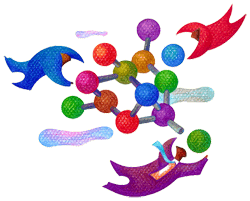Four Ways To Engage Your Employees
- Listen. Every company has good ideas. The question is, are they recognized? Too often, the good suggestions fall on deaf ears. Even if an idea seems silly, or not doable, before you reject it, let it work itself inside your brain for a while. Often, the best ideas come from where the work is being done.
- Get Feedback From Within. Being recognized by our manager is important, but just as important, and maybe more sincere, is the recognition we get from our colleagues. Start a campaign where employees can recognize the work of others.
- Inform. Sometimes organizations don’t see the need to inform everyone of progress, issues and roadblocks. So instead of knowing what’s going on, employees guess. Or wonder. A thorough understanding of the situation engages employees even more powerfully. Providing information encourages a culture of assistance. Instead of being discouraged, employees are more likely to ask, what can we do to overcome this barrier?
- Involve. No one is expected to have all the answers. Even management can’t possibly have all the answers. Involving employees in decisions is powerful. With involvement comes ownership. Employees work harder to make it happen.
Working Effectively as a Team, Motivating Employees, Building Trust and Integrity – these are just some of the courses we’ve developed for organizations. How can we help you? Give us a call at 301-670-0051. Let us help you put a plan in place to instill a culture of accomplishment in your organization.
Planning for the Year Ahead
 Your business plan is essential to the success of your organization. Your plan is your map. It not only describes what you are going to do, but also provides a direction on how you and your team will get there. Without this execution strategy, your plan is meaningless.
Your business plan is essential to the success of your organization. Your plan is your map. It not only describes what you are going to do, but also provides a direction on how you and your team will get there. Without this execution strategy, your plan is meaningless.
Having a solid plan for how your department or organization will run is a key component of its smooth and successful operation. Your plan is critical to achieving success. It’s important to you, your managers and equally important for the staff you lead. Everyone needs to understand how your organization should be run on a daily basis. Your thoughts and expectations should be clearly defined.
Obviously, for smaller organizations, the business will be far more streamlined and less complicated than it is for larger ones, but your plan still needs to demonstrate an understanding of the work required and how you’ll handle the work flow.
So let’s discuss how you can put together a plan that is organized and understood. Your plan should contain the following items.
Mission. Your mission should be clearly defined so that everyone knows what your organization or department does and why you do it. You may be part of a broader mission, but your organization should still have its own mission. A clear and thoughtful mission statement creates a connection with the organization and the people you serve.
Keys to Success. Organizations have a few key factors that lead to success. What are the things your organization must do to be successful? List these factors in your plan.
Analysis of your organization’s position. Think about your organization’s position or circumstances. A good tool to use is a SWOT analysis – Strengths, Weaknesses, Opportunities and Threats. What is the present position of your organization and how does it need to grow, or change?
Description of Services. What are the services you offer to the rest of your organization? A clear description of these services, what they do and the benefits they provide are important. You may provide a variety of services, depending on whether your customers are internal, external or both.
Delivery Requirements. You must define the requirements of the services you will deliver. These requirements may be set by your team or defined by an outside source. In either case, deciding the measurements and stating them within your plan is important to tracking success. Your next step is to define the responsibilities around each step and the tactics you will take to accomplish your goals. These requirements will play a key role in helping you analyze the success of your staff and the organization as a whole.
Implementation Plan. How are you going to carry out your plan to provide the services needed by others? Your plan should be strategic. Each task should bring you closer to accomplishing the plan.
Objectives. There is a reason why you are taking certain steps, or actions. These are the objectives – and should be stated in your plan. The objectives also help to define success factors.
Personnel and Expertise Needs. Your managers and staff carry out most of your plan. It’s important that everyone understands his or her responsibilities, as well as the qualifications for doing the job. Our next article provides more detail on roles and responsibilities within the plan.
Leah M. Joppy & Associates would like to be your partner in your strategic plan. We provide training – training for leadership, professional and personal development, and many different types of computer training. Give us a call at 301-670-0051 and let us help you achieve faster results with your team.
Utilizing Technology
 In this day and age, every organization should leverage technology in the workplace. But it’s one thing to have technology solutions and quite another to make sure the solutions are being used to their full extent. Using technology is not just about having computers and an internet connection in the office. It’s also about having a deep understanding of the various software solutions available to employees. Having a complete working knowledge of various applications will significantly affect employee productivity. The knowledge and understanding of these programs also breaks down barriers to mobility. Work-related documents and information can be accessible on the road, as well as in the office.
In this day and age, every organization should leverage technology in the workplace. But it’s one thing to have technology solutions and quite another to make sure the solutions are being used to their full extent. Using technology is not just about having computers and an internet connection in the office. It’s also about having a deep understanding of the various software solutions available to employees. Having a complete working knowledge of various applications will significantly affect employee productivity. The knowledge and understanding of these programs also breaks down barriers to mobility. Work-related documents and information can be accessible on the road, as well as in the office.
Wasted time and energy add up over time. Keeping employees productive and efficient should be an important objective for all managers. Looking at a normal business environment, there are many tools that can help organizations take control of their time and improve efficiencies. Here are some examples.
- Collaboration is key in the workplace. Increased connection in the workplace promotes extended communications among co-workers, clients, and industry professionals. The right technology can eliminate multiple emails flying back and forth between employees. You can also eliminate any “double” work, where 2 or more people may be making corrections on the same document. Try using collaborative tools such as webinar conferences, skype, video chat or an intranet where employees can share files. Applications such as OneNote, Outlook, Office 365 and Project can keep everyone informed more efficiently. Many organizations are adopting SharePoint for even greater project management oversight.
- Document Management. When cloud services became available, document management got a whole lot easier. Employees can work live with collaboration tools like Google Docs. This tool allows multiple people to work on a project together without emailing multiple versions back and forth.
- The collection of data and the retrieval of information is key in today’s workplace. At the very minimum, employees should have a working knowledge of Excel and know what capabilities exist within the application. Other programs, like Sharepoint, are capable of more complex data entry and retrieval.
- Tools that are common to most workplaces – including most Microsoft Office applications – are instrumental in providing an effective solution for organizing the data collected to solve many problems.
Effective Use Of Technology In The Workplace. Technology has afforded most organizations with the opportunity to have a higher level of communication and connectivity than we’ve had before. We have, through these technologies, the ability to connect instantly with others, regardless of where they work or live. Employees have the ability to communicate face to face – even when they reside in different parts of the country – or world!
Technology is a powerful tool that can be used to foster relationships, effectively manage time, improve organization and bridge the gaps of communication. The key to the powers of technology lies in the knowledge and confidence of your employees. The level of knowledge of a particular application depends on the individual and his or her work. Some of us take longer to understand and feel comfortable with programs than others. By providing workshops to reinforce what we know, and open the door to other possibilities, we grow the productivity skills of our organization.
Intelligent Workshops
Our workplaces today have had an eruption in technology. How we work and how we deliver our products and services has shifted. We need to maximize the ability of our employees in order to create efficiencies. The workshops listed below help to break down barriers to productivity.
Give us a call at 301-670-0051 and let us help you achieve faster results with your team.
| Word | Excel |
| Access | PowerPoint |
| Outlook | InfoPath |
| OneNote | Project |
| Publisher | WordPerfect |
| Crystal Reports | Adobe Professional |
| SharePoint | SharePoint Designer |
| Office 365/One Drive | Skype for Business |
| Visio |
SharePoint: Empowering Teamwork
 Businesses and organizations must be able to work intelligently. We have to be able to communicate rapidly, change directions when needed and manage projects and staff simultaneously. Work requires agility. It’s a tall order. To be productive and efficient, we need to invest in solutions that are tested. The applications we use must be reliable and still provide flexibility for the particular work we do.
Businesses and organizations must be able to work intelligently. We have to be able to communicate rapidly, change directions when needed and manage projects and staff simultaneously. Work requires agility. It’s a tall order. To be productive and efficient, we need to invest in solutions that are tested. The applications we use must be reliable and still provide flexibility for the particular work we do.
We spend money and time investing on our infrastructure. Our expectations are that these investments will improve performance and reliability. And we expect these systems to expand as we do – providing future needs as we grow in different ways.
Still, our investment in infrastructure depends largely on our workforce and our adoption strategies. Given the right application, and the training needed to utilize its capabilities, organizations have the power to collaborate, manage projects, and work more intelligently than ever before.
SharePoint, the web application designed by Microsoft, is probably the most highly configurable application used to reinforce the work processes throughout organizations. Here’s how SharePoint can help your organization.
Content management. Nearly everything that you can do with documents and content is easier with SharePoint. You can store files and then retrieve the information. You can search that information for certain content. You can manage these files intelligently and even track who’s accessing them. The application is designed specifically for record keeping purposes, legal issues, compliance and work processes.
Collaboration. SharePoint allows people on the same team to share documents. Process management is centralized with every member of the team sharing the same knowledge. Departments are more productive with easy file sharing.
Project Management. Projects are more easily managed. Communication within the team is easier and less cluttered when everyone can have access to documents and leave comments as needed – all within the same platform. Schedules are less likely to slip with reminders in place and hand-offs that are communicated more efficiently.
Intelligent Data. All companies and organizations have data. The problem is finding the data when you need it. How do you search through emails effectively? How do you find the latest version and feel confident that you can make changes and they will be seen and absorbed by all? SharePoint allows centralized access to enterprise information and applications.
The power of SharePoint is empowering teamwork. Every member can find, share and communicate content from any place, to any device.
You have the power. Leah M. Joppy & Associates has training capabilities that can help your organization build effective communication skills that ultimately lead to better teams and better productivity. Check out our new offerings on the following computer training. We have training in these applications at all levels, and in any version! We’re standing by. Give us a call today at 301-670-0051 or send us an email at leadership@lmja.com.
.
Can You Advance Without Becoming a Workaholic?
 Your boss spends at least one day out of the weekend in the office. Or your boss is on the job till 7 pm most nights. Does this make you think, “I have to do the same if I’m going to succeed!” Maybe not everyone thinks that way, but I sure did! One of my bosses was in the office every Saturday. And nearly every evening, he was there when I left. I started to think that this was what was expected of me. But I had a family, and kids still at home, I wasn’t sure this was really what I wanted to do.
Your boss spends at least one day out of the weekend in the office. Or your boss is on the job till 7 pm most nights. Does this make you think, “I have to do the same if I’m going to succeed!” Maybe not everyone thinks that way, but I sure did! One of my bosses was in the office every Saturday. And nearly every evening, he was there when I left. I started to think that this was what was expected of me. But I had a family, and kids still at home, I wasn’t sure this was really what I wanted to do.
I decided to mention it to my boss. I wove it into the conversation when we were talking about someone junior to me. He mentioned that he didn’t think this particular employee was dedicated to his job. So I asked him to tell me what he meant when he said “dedicated to his job.” Did he expect overtime? Working on weekends? To my surprise, and relief, he told me that he didn’t expect long hours, and certainly not weekend job responsibilities. He did those things because his family lived in another city and it was easy for him to spend long hours at work. Instead, he wanted to see passion in his employees. He said,“people who work for this company should have a real desire for their work, and demonstrate value.”
So what is expected of most employees? How do you get ahead, without dedicating your life to your organization? Here are some tips from career coaches.
Be engaged. If you are engaged, you’re part of the solution. How can you help? Your attitude shows through and more people want to be around you.
Be a person who takes action. Have you ever been in a meeting where someone keeps telling you, “it won’t work.” It drives you crazy, doesn’t it? Instead of saying it won’t work, try coming up with a solution. You take ownership. Demonstrate the creative problem solving skills you have.
Work smarter. Long hours don’t necessarily mean you are more productive. Take a minute to think through your project and see if there are overlapping areas that aren’t necessary. That’s what business process re-engineering is all about. Companies and organizations start fresh. They look at a process and determine what activity is no longer productive. Working smarter means planning your time more effectively.
Focus on relationships. Advancement rarely happens in a silo. Instead, managers what to know that the relationships you’ve built are solid. It’s important that people who work for you think highly of you. And in building relationships, you never know what gems of knowledge you’re going to uncover.
Take on new challenges. Do you hide from new projects? Instead of thinking of the work that new projects entail, think about how, if done right, that new project might just help you learn new skills – skills that will be important to the business as you move forward.
Think Big. Instead of being mired in the details, think about how you can achieve more. If you’re going through a checklist, you’re probably thinking of tasks. Look at the big picture instead, and come up with ideas that might grow the business.
When it comes right down to it, the one thing that separates successful people from others is the smart decisions they’ve made – not the hours they’ve spent on the job.
More successful employees result in a more productive organization. Does your organization need help with career development? Leah M. Joppy & Associates provides training at all levels. Give us a call at 301-670-0051 and let’s discuss your needs.
What are the top things that successful people do well?
Successful people tend to think big – looking at the entire picture instead of their particular role. Here’s what they do well.
- They stick to ethics. Whether you are dealing with fellow employees, learning the game of golf or downloading a report, stick to ethical behavior. People will appreciate your professionalism.
- They are social. The most successful people know how to draw out others. They know what questions to ask and what compliments to extend. In the end, they put people at ease. The result is that people want to interact with you.
- They invest in people. Whether it’s someone working for you, or a peer, investing in their future is as important as investing in yourself. Successful people often mentor or coach. They realize that when everyone around them is happier and more successful, they will be too.
More successful employees result in a more productive organization. Does your organization need help with career development? We provide training at all levels. Give us a call at 301-670-0051 and let’s discuss your needs.
Where will you be, this time next year?
 It’s the beginning of a fiscal year. A year from now you’d like to look back on the last 12 months and be proud of what you’ve accomplished. Is that even possible in our changing environment? Can I create a plan that not only motivates me, but motivates all the people who work for me?
It’s the beginning of a fiscal year. A year from now you’d like to look back on the last 12 months and be proud of what you’ve accomplished. Is that even possible in our changing environment? Can I create a plan that not only motivates me, but motivates all the people who work for me?
I know what you’re thinking. . .
“Maybe if I owned my own business, I could make plans!”
“If I work with blinders on, maybe I can just keep pluggin’ away and not pay attention to all the changes happening around me.”
It’s not easy. In this changing world, is there any point in trying to plan? The answer is a resounding YES! But the planning has to be smart. Consider these points.
Set Priorities. As of today, what are the priorities of your organization? The basic priorities probably won’t change much over the year, so think high level priorities and write them down.
Focus Energy. In every job, there are lots of things we do that sap us of energy, but really don’t move the organization forward. So what we are talking about here, is focusing on the items that have more to do with the overall health of the organization, rather than your particular job.
Identify Resources and Strength Operations. Identify the high level priorities and decide where your energies should be spent. Look around your organization and beyond for resources that can help. Are there groups or departments who can help you strengthen your talents and accomplish a goal? Is there an individual with particular skills who can help develop those same skills throughout your department? Should you go outside your organization? Sometimes training is best accomplished by someone from the outside. A third-party resource may not have preconceived notions on what you should learn. Instead, outside resources are generally better at listening to you and coming up with the training customized to your needs.
Establish Common Goals. We all have different work to do, but our goals can be universal. Knowing what my part is in reaching a goal helps me keep on track. And measuring the activity leading up to the goal can remind me each month of the importance of the goal.
Assess and Adjust. When the organization takes a turn, you can adjust your priorities, energy, resources and goals. Chances are, you’ll only need to adjust them slightly, making everyone feel better about the change in the organization.
Measure Accomplishments. As each quarter winds down, focus on what you have been successful in achieving. On a daily basis, we sometimes feel like we’re going in circles. But when we look at a 3 month period, it’s fulfilling to see how far we’ve come.
Strategic planning depends on a disciplined effort that produces fundamental decisions and actions that shape and guide what an organization is, who it serves, what it does, and why it does it – with a focus on the future. Measuring action items is critical. See our tip on measuring strategic plans.
For more information on how Leah M. Joppy & Associates can be your resource for training, give us a call at (301) 670-0051. Or take a look at the training opportunities on our website.
5 Tips for Measuring Strategic Success
- Include Key Performance Indicators. Nearly everything we do can be translated to numbers. While numbers never tell the entire story, they serve two purposes: 1) they help management determine results, 2) they motivate everyone to reach the goal.
- Include the HOW in your plan. How does your goal help align the organization? Including your organization and how your objectives improve the performance of the entire organization helps everyone understand the vision. Communication is key toward helping an organization achieve success.
- Set timeframes. Working on your strategic plan for 12 months is more effective than squeezing it all in during the last quarter of the year! If timetables are given for each goal, small chunks that can be accomplished on the way to the accomplished goal, the chances of reaching that goal are improved considerably.
- Make it possible. If a goal is not attainable, there will be no movement toward that goal. Breaking it down, even if the goal will end up taking several years, will improve the chances of success. Along the way, your organization will see progress, allowing your group to envision the end result.
For more information on strategic planning and overcoming organization challenges, check out our website at http://www.lmja.com/index.php, or give us a call at 301-670-0051.
Competency Modeling
 Is competency modeling part of your strategic plan? More and more organizations are using competency modeling to define successful performance in a particular work setting. Here’s an overview of competency modeling – what it means and what are the benefits of competency modeling.
Is competency modeling part of your strategic plan? More and more organizations are using competency modeling to define successful performance in a particular work setting. Here’s an overview of competency modeling – what it means and what are the benefits of competency modeling.
Competencies are individual characteristics. Competencies are often the basis for skill standards. They include the knowledge, skills, abilities, self-image, traits, mindsets, feelings, and even the ways of thinking with regard to appropriate roles. These competencies lead to a desired result – they contribute to exemplary performance that in turn, creates an impact on the outcome of the organization.
In short, a competency is the framework for defining the skill and knowledge requirements of a job.
What is a competency model? A competency model is a list of characteristics that together define successful performance in a particular work setting.
Competency models can be developed for specific jobs. They are widely used in various industries to define and assess competencies – in both hard and soft skills.
How does competency modeling differ from job analysis? The aim of competency modeling is not to summarize how a job has been performed in the past, but rather to identify the behaviors that will be needed to achieve long-term strategic goals. In this sense, competency modeling is forward looking and not rooted in the past.
What are the benefits of competency modeling. Competency models are considered valuable by various organizations to define skill and knowledge requirements of specific jobs, to assess competencies and performances, and help set business strategy. They also help reveal strengths and weaknesses – which help form the basis for training programs and learning content, both formal and informal.
In general, organization that adhere to competency modeling report:
- Greater alignment with business objectives.
- Enhanced productivity.
- Increased workforce nimbleness.
- Improved ability to identify and develop high achievers.
- Better retention of top talent. |
Experts also recommend that competency models receive sponsorship from senior leaders, are aligned to the organization’s business strategy and culture, are based on research and are tied to talent management practices.
For more information on Competency Modeling and Training, contact LMJ&A at leah@lmja.com. We can help your organization successfully employ competency modeling in the workplace. Working with you step-by-step, we will support and guide your organization through each component of the process. Give us a call at 301-670-0051.



